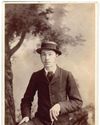
Life after the coal industry
Mik Critchlow has been photographing his home town of Ashington, and the demise of the coal industry, since 1977
IN 1977, Mik Critchlow was 22 years old and had spent the previous seven years in the Merchant Navy. Whenever he returned to his hometown of Ashington in Northumberland on leave, he would notice the rapid changes that were taking place in the area. Almost entirely reliant on the coal industry, Ashington was once the hub for 114 collieries. By the time Mik first picked up a camera in the late ’70s, only 14 remained. ‘I started to realise it was important to record what I saw and the people I knew,’ he says. More than 40 years and some 50,000 negatives later, his work is about to be recognised with the publication of a book, Coal Town, by Bluecoat Press.
It is the urge to get beneath the surface and explore a subject from the inside out that characterises the documentary photographer. The long-form documentary photographer will stick with that same subject for year upon year,
recording not only the changes but also the things that stay the same. ‘I see it as a duty,’ Mik explains. ‘A duty to show things as they are. It’s not about nostalgia – it’s the real now.’
His main focus is on the lack of employment in Ashington. At its peak, 5,000 miners lived in the town. As Mik puts it, ‘That’s 5,000 families. And there were ancillary industries feeding the mining industry that closed at the same time as the mines. We were very, very hard hit. Now, there are problems with alcohol and drugs, and second- or third-generation unemployed kids who have never worked and who have no future prospects. Nowadays, the main employer is the 24-hour Asda store, but I’m told most who work there are on zero-hour contracts.’
People’s history
Esta historia es de la edición November 16, 2019 de Amateur Photographer.
Comience su prueba gratuita de Magzter GOLD de 7 días para acceder a miles de historias premium seleccionadas y a más de 9,000 revistas y periódicos.
Ya eres suscriptor ? Conectar
Esta historia es de la edición November 16, 2019 de Amateur Photographer.
Comience su prueba gratuita de Magzter GOLD de 7 días para acceder a miles de historias premium seleccionadas y a más de 9,000 revistas y periódicos.
Ya eres suscriptor? Conectar

Calling The Shots: A Queer History of Photography
Offering an unprecedented view of photographic history through a queer lens, this is a wonderful and powerful book, says

Large-aperture standard zoom, too
SONY has also revealed a new premium standard zoom, the FE 28-70mm F2 GM.

Super-fast, high-res Sony Alpha Ai II
SONY has announced its new professional full-frame flagship camera, the Alpha A1 II.

39 awesome accessories
Our round-up of the best accessories we've used and reviewed this year, along with some old favourites. There's something here for every budget, starting from just £7, including tripods, bags, filters and much more

Such a thing as society
This autumn sees the launch of a major new book and exhibition devoted to examining the multiplicities of photography during 1980s Britain. Peter Dench finds out more

Join Club
The sociable Canvey Island Photographic Club is keen to grow its in-person meet ups

Capturing flight
Winners and finalists of Bird Photographer of the Year share their tips for success with Hollie Latham Hucker

140 years of change
AP has become the world’s oldest surviving consumer photo magazine because we have moved with the times, says Nigel Atherton

Preserving history in platinum
A deep dive into the meticulous art of platinum printing, and the collaboration between the Royal Geographical Society and Salto Ulbeek. Mike Crawford explores how they brought historical photographs to life with enduring beauty and precision

Life in the past lane
What was life like for an amateur photographer in 1884? John Wade takes a trip back in time